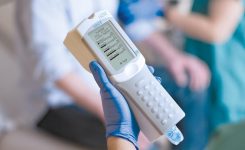Blog
Typhoid Fever Testing Guidelines: Equipping Medical Centers for Accurate Diagnosis
Typhoid fever is an extremely infectious life-threatening disease that can infect the intestinal tract and can even spread into a person’s bloodstream. This illness is a serious public health problem in a lot of Southeast Asian countries like the Philippines.
Accurate and timely diagnosis is essential for effectively managing and preventing its spread. In this article, we will examine the guidelines for typhoid fever testing and discuss how medical centers can ensure accurate diagnosis. Additionally, we will provide insightful statistics on the current situation in the Philippines to highlight the impact of this infectious disease.
Understanding Typhoid Fever
Typhoid fever is caused by the Salmonella Typhi bacterium and is primarily transmitted through contaminated food and water and has some common symptoms like high fevers, severe headaches, abdominal pains, and skin rashes.
As such, accurate laboratory testing is crucial for diagnosis. Blood culture is the gold standard for diagnosing typhoid fever as it allows for the identification of bacteria. Rapid diagnostic tests (RDTs) are also available and provide quicker results, but their sensitivity may vary. To ensure accurate diagnosis, medical centers should adhere to established testing guidelines.
Typhoid Fever Testing Guidelines
The World Health Organization (WHO) and the Philippine Department of Health (DOH) have established comprehensive guidelines for typhoid fever testing. These guidelines stress the importance of proper specimen collection, handling, and laboratory techniques. Medical centers should ensure that trained personnel perform blood culture tests, which is the recommended diagnostic method for typhoid fever, and follow aseptic procedures carefully. They should also have the necessary supplies on hand. By following these guidelines, medical centers can improve the accuracy and reliability of typhoid fever diagnosis, which helps with effective patient management and prevention measures.
Typhoid Fever in the Philippines
The Philippines faces a significant challenge with typhoid fever, particularly in densely populated areas where inadequate sanitation is inadequate. In 2022, the Philippine Statistics Authority (PSA) reported 12,124 typhoid fever cases, a 150% increase from the 4,844 infections reported in 2021. This represents an additional 7,280 cases.
There were 56 reported deaths nationwide due to typhoid fever. About 17% of the cases were children ages one and four. These statistics underline the need for proactive measures to prevent and treat the disease properly. These measures include strengthening diagnostic capabilities in medical centers to reduce morbidity and mortality associated with typhoid fever.
AVAILABLE HERE: Aria Typhoid IgG/IgM Combo Rapid Test Kits
Strengthening Diagnostic Capacities
Local medical health centers play a vital role in controlling typhoid fever. They should provide proper training on the latest diagnostic methods and guidelines. Collaboration between medical centers, public health agencies, and laboratories is essential for typhoid fever outbreak surveillance and response. By strengthening diagnostic capabilities, medical centers can contribute to the accurate and timely diagnosis of typhoid fever infection leading to proper treatment and prevention measures.








